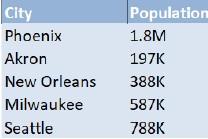
Cellular services have become a critical infrastructure component of modern life. It’s hard to imagine not being able to communicate on the go with our mobile devices, or increasingly through a wireless home gateway enabling internet services to both residential and business customers.
But not often discussed is the burden that numerous cell sites place on the electricity supplies required to keep them powered. This report will evaluate the amount of power needed to run our cell sites, and the potential sustainability benefits if they are made more power-efficient. We’ll analyze the number of equivalent households that could be powered from the more efficient cell site electricity savings.
Number of US cell sites
According to the CTIA there were 417,215 sites in the U.S. at the end of 2020. While this number is a moving target as more cell sites continue to be added as new areas and/or services are deployed, we will use this number in our calculations below.
Cell site power requirements
A recent analysis by Ericsson provided data on how much power is required to run a typical wireless cell site. It assigned a Megawatt Hour (MWH) power requirement to each type of cell site. We calculated the yearly total amount of power needed from this data.
Reducing power requirements
Industry estimates assume that by using the latest technology that reduces the power requirements of the hardware at each cell site, while also improving the software that manages those sites through AI techniques and more modern and granular controls, each site could save as much as 40% of its electricity needs.
While we won’t achieve the 40% reduction quickly, since much of that reduction will be based on installing new equipment that will take years to upgrade, we can still assume more incremental reductions over time. Any reduction significantly reduces the total electricity requirements, potentially saving greenhouse gas emissions from commonly available traditional carbon-based electricity generation, but also potentially offering improved metrics for powering sites by alternative means from renewable sources like solar or wind.
Power savings can power a large number of households
Saving costs for the operators associated with powering cell sites is not the only benefit obtained by power reducing technologies. Sustainable reuse of the electricity can be used to power a large number of equivalent households without the need for new power sources. U.S. government statistics estimate an average U.S. household uses 10,715 KWh per year, and we’ll use that number in our analysis.
Sustainability benefits
Figure 1 shows the results of our analysis. US Cell Sites use a total of almost 21 million MWh of power yearly. That’s the equivalent of the average power used by almost 2 million households. Each 10% reduction in total cell site power results in enough electricity saved to power the equivalent of 195K households. And a 40% reduction provides enough electricity to power the equivalent of almost 782K households.
Figure 1: Electricity used by U.S. cell sites, and power savings that can power the equivalent number of households

To provide some perspective, Figure 2 shows the population of cities that could be completely powered from the reduced electricity needs of cell sites for each to the equivalent number of household calculations above. ,
Figure 2: Sample cities that could be powered by the cell site power reductions

Conclusions: The amount and cost of electricity to operate our modern cellular infrastructure is massive and has an effect on users’ subscription costs as well as load on the power grid and creation of greenhouse gases from power generation.
Our analysis indicates reducing overall power requirements offers substantial benefits, and can be used to offset the power for a large number of households. It would be beneficial for the industry to move in this direction as quickly as possible.
Jack Gold is founder and principal analyst at J.Gold Associates, LLC. With more than 45 years of experience in the computer and electronics industries, and as an industry analyst for more than 25 years, he covers the many aspects of business and consumer computing and emerging technologies. Follow him on Twitter @jckgld or LinkedIn at https://www.linkedin.com/in/jckgld.